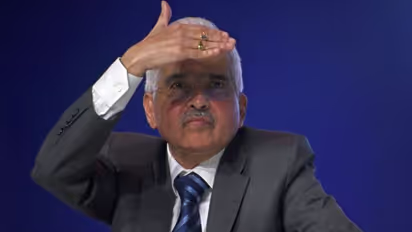US Federal Reserve rate hike: Why RBI is in a catch-22 situation

Synopsis
The RBI needs to open a two-front war to mitigate the fallout of US rate hikes, Barclays Vice President Shishu Ranjan told Asianet News English.
The United States Federal Reserve's decision to increase the rates by three-quarter points to ease inflationary pressure on its economy was the sixth hike this year. It is said to be at the highest level in 15 years. It is pertinent to mention here that this year, the world economy has been rattled by inflation and disruption in the supply chain due to the ongoing war between Russia and Ukraine. The situation has forced global economies to tighten their monetary policy. For the first time in the last 40 years, the US has witnessed inflation at such a level.
Also See: Asianet News Dialogues: 'We are in the best of times in the country'
The Reserve Bank of India (RBI) has hiked the repo rate three times, and it is believed that the country's central bank will raise its rates again to contain the price rise.
Asianet News spoke to Barclays Vice President Shishu Ranjan about how this would impact India.
He said, "The 75-basis point rate hike by Federal Reserve is in line with the general expectations as the US economy continues to witness a prolonged period of a high inflation rate of more than 8 per cent, which is highest in the last 40 years. The 6th consecutive rate hike has increased the base rate from zero per cent to four per cent, and these steep hikes impacted the US economy and the rest of the world."
"Given that the US is the second-largest investor in the Indian economy and the country's largest trading partner, the Indian economy has been facing the heat on two fronts. First, the cost of funds increases for the US investors, which triggers capital flight from India, negatively impacting FDIs and FIIs. Second, the capital pullout by US investors puts downward pressure on the dollar-rupee exchange rate, and the rupee depreciates because of higher demand of dollars in the currency exchange market," Ranjan added.
With depreciation in rupees, imports become costlier while export becomes competitive. Besides, India has higher imports than exports, due to which the net impact on the balance of trade becomes adverse.
Depleting forex reserve
According to Barclays Vice President, India’s foreign exchange reserve decreased by $110 billion.
"With the increase in the cost of funds and cost of input, general inflation increases in the Indian economy, which is evident from the current inflation rate, being consistently higher than the upper limit of the targeted Inflation rate of 6 per cent," he said.
Ranjan said that the RBI needs to open a two-front war to mitigate the fallout of US rate hikes:
1) The rates in India need to be hiked to contain the inflation
2) Intervene in the forex market to prevent the import of inflation because of the rupee depreciation.
"However, the rate hike increases the cost of funds for domestic investors and is expected to hamper the growth rate. Therefore, RBI is in a catch 22-situation and needs to balance the growth outlook against inflationary pressure, for which there is no fixed formula," he said.
Also Read: New India focusing on bold reforms and big infrastructure: PM Modi
Stay updated with all the latest Business News, including market trends, Share Market News, stock updates, taxation, IPOs, banking, finance, real estate, savings, and investments. Track daily Gold Price changes, updates on DA Hike, and the latest developments on the 8th Pay Commission. Get in-depth analysis, expert opinions, and real-time updates to make informed financial decisions. Download the Asianet News Official App from the Android Play Store and iPhone App Store to stay ahead in business.